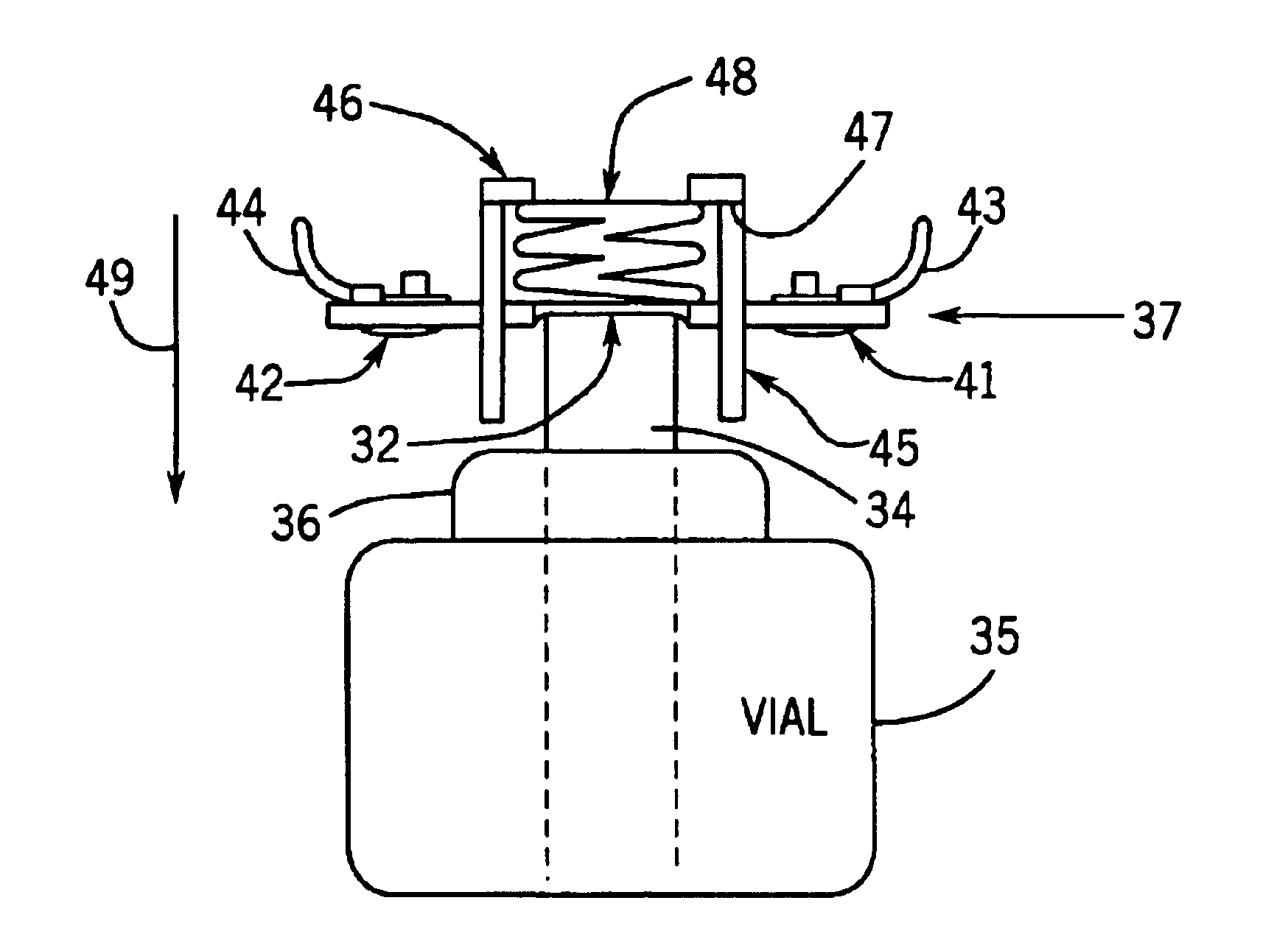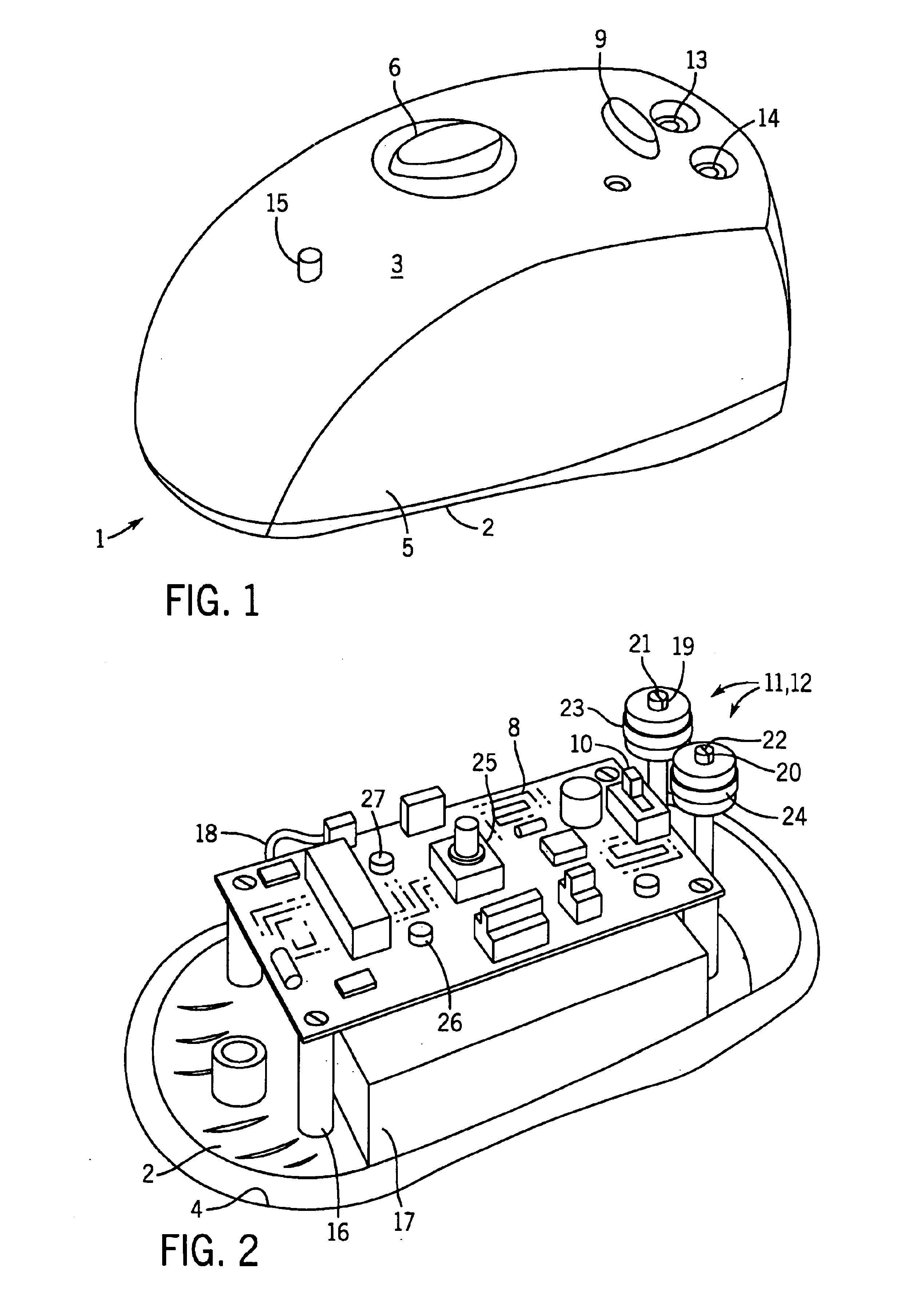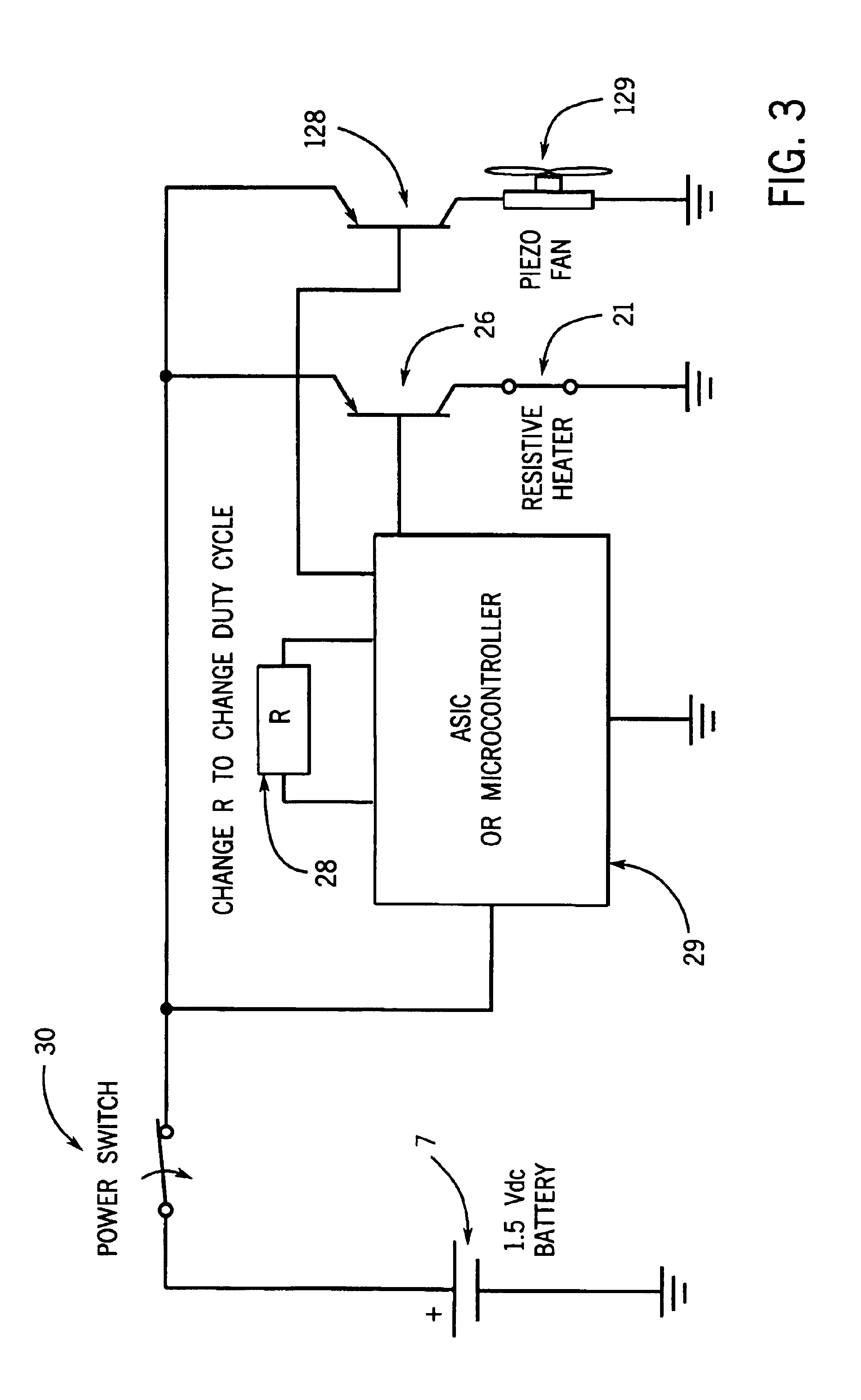Localized surface volatilization
a technology of volatilization and localized surface, which is applied in the direction of space heating and ventilation, domestic stoves or ranges, containers discharging from pressure vessels, etc., can solve the problems of limited actives that can be effectively used with the unit, limited battery powered devices, and ineffective portable devices, etc., to promote uniform evaporation of all components, increase vaporization, and increase vapor pressure
- Summary
- Abstract
- Description
- Claims
- Application Information
AI Technical Summary
Benefits of technology
Problems solved by technology
Method used
Image
Examples
examples
[0101]FIG. 6 is a graph that illustrates the ability of localized and cyclic heating used in heater 1 to meter the release of fragrance. This method of dispensing provides for increased control and flexibility. Current heated systems create an equilibrium release between temperature, surface area, and effluent physical properties. By controlling the amount of heat or more directly the magnitude of temperature reached, the on-time duration, and the frequency of the cycle this heating method can provide a wide range of effluent release, as shown. This experiment was conducted as shown in Table 1 with a 15 G NiCr wire resistive heating element.
[0102]
TABLE 1Weight perWeightDispensingTempDispensingsChangeInitialFinalDispensingsCycle+ / −5 (F.)(μg)(g)(g)(g)(or minutes)(min)11018.180.0002014.090114.089911113020.000.0002014.089414.089210115020.000.0002014.088714.088510117040.000.0004014.088214.087810119081.820.0009014.017314.0164111210120.000.0012014.085314.0841101230200.000.0020014.083014.08...
PUM
| Property | Measurement | Unit |
|---|---|---|
| diameter | aaaaa | aaaaa |
| diameter | aaaaa | aaaaa |
| tensile strength | aaaaa | aaaaa |
Abstract
Description
Claims
Application Information
 Login to View More
Login to View More - R&D
- Intellectual Property
- Life Sciences
- Materials
- Tech Scout
- Unparalleled Data Quality
- Higher Quality Content
- 60% Fewer Hallucinations
Browse by: Latest US Patents, China's latest patents, Technical Efficacy Thesaurus, Application Domain, Technology Topic, Popular Technical Reports.
© 2025 PatSnap. All rights reserved.Legal|Privacy policy|Modern Slavery Act Transparency Statement|Sitemap|About US| Contact US: help@patsnap.com



